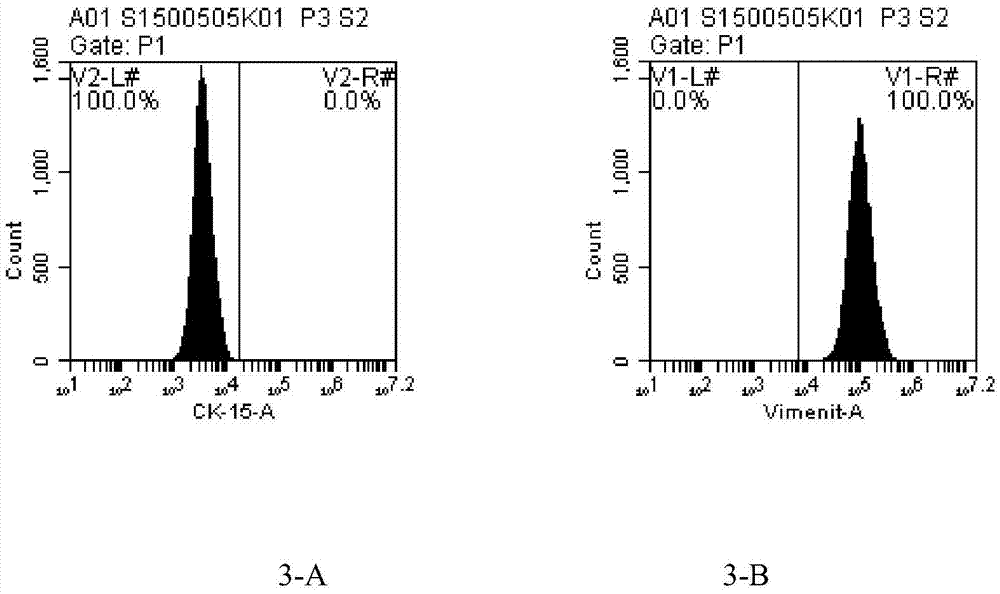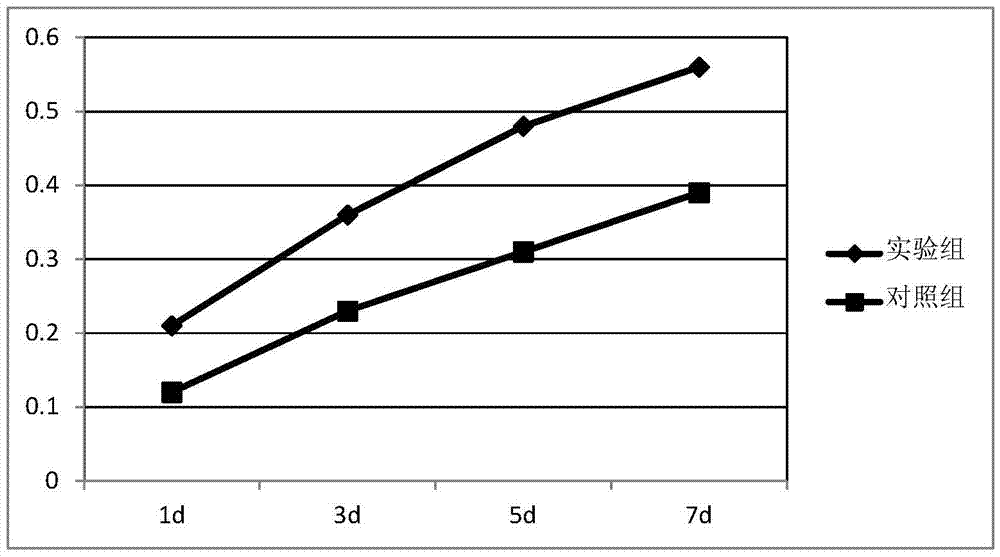Primary isolation method of animal skin fibroblasts
A fibroblast and animal skin technology, applied in the field of stem cell culture, can solve the problems of cell mechanical damage, low attachment stability, and low cell viability, so as to improve the separation efficiency and quality, enhance the attachment efficiency, and increase the number of cells Quantity effect
- Summary
- Abstract
- Description
- Claims
- Application Information
AI Technical Summary
Problems solved by technology
Method used
Image
Examples
Embodiment 1
[0020] A kind of mouse skin fibroblast primary separation method of the present embodiment, it comprises the steps:
[0021] 1.1 Select the abdominal skin of the mouse, use curved scissors to slightly cut off the hair, disinfect the skin with iodine and alcohol, make a circular full-thickness skin wound with a diameter of 2.0 cm, expose the wound and continue to raise.
[0022] 1.2 After skin injury (3-5) days, the mice were sacrificed, the injured skin area was removed, the subcutaneous tissue and excess blood vessels were removed, and the skin was washed 3 times with PBS containing 2% double antibody.
[0023] 1.3 Cut the skin to 0.5mm with ophthalmic scissors 3 size organization block.
[0024] 1.4 Pour in an appropriate amount of PBS containing 1% double antibody, centrifuge at a low speed of 1000rpm / min for 5min, remove floating tissue pieces, and discard the supernatant.
[0025] 1.5 Add 0.2% gelatin 1mL / dish to a 9cm cell culture dish in advance and incubate for 30min...
Embodiment 2
[0028] This embodiment is the primary isolation method of conventional conventional mouse skin fibroblasts, comprising the following steps:
[0029] 2.1 The mice were killed, the hair was slightly trimmed with curved scissors, the skin was disinfected with iodine and alcohol, the skin tissue with a diameter of 2 cm was removed, and the skin was washed 3 times with PBS containing 2% double antibody.
[0030] 2.2 Cut the skin to 0.5mm with ophthalmic scissors 3 size organization block.
[0031] 2.3 Pour in an appropriate amount of PBS containing 1% double antibody, centrifuge at a low speed of 1000rpm / min for 5min, remove residual trypsin floating tissue pieces and pour off the supernatant.
[0032] 2.4 The centrifuged tissue pieces were evenly inoculated in a 9cm cell culture dish, and 2ml of medium (DMEM+10%FBS+2% double antibody) cell culture solution was added, and placed at 37°C, 5%CO 2 cultured in an incubator.
Embodiment 3
[0034] This embodiment is a comparison of the cell growth status after the separation of mouse skin fibroblasts
[0035] Three different batches of mice were treated with the methods of Example 1 (experimental group) and Example 2 (control group), respectively, and the cell growth of the tissue block was observed every day after inoculation.
[0036] Table 1: Comparison of the number of cells in the experimental group and the control group
[0037]
[0038] As can be seen from Table 1, the number of cells separated by the experimental group is more than 2 times that of the control group, which proves that the scheme of the present invention can greatly improve the number of cells separated.
PUM
| Property | Measurement | Unit |
|---|---|---|
| diameter | aaaaa | aaaaa |
Abstract
Description
Claims
Application Information
 Login to View More
Login to View More - R&D
- Intellectual Property
- Life Sciences
- Materials
- Tech Scout
- Unparalleled Data Quality
- Higher Quality Content
- 60% Fewer Hallucinations
Browse by: Latest US Patents, China's latest patents, Technical Efficacy Thesaurus, Application Domain, Technology Topic, Popular Technical Reports.
© 2025 PatSnap. All rights reserved.Legal|Privacy policy|Modern Slavery Act Transparency Statement|Sitemap|About US| Contact US: help@patsnap.com



